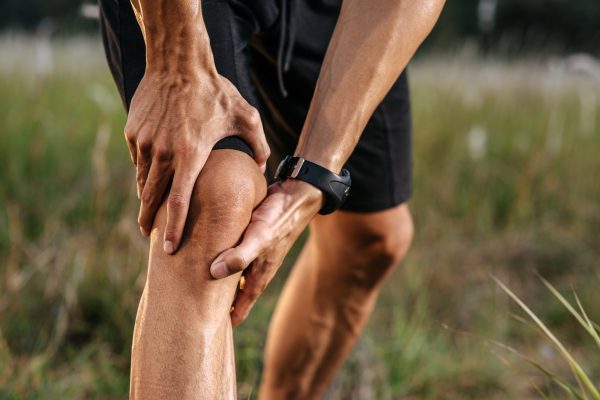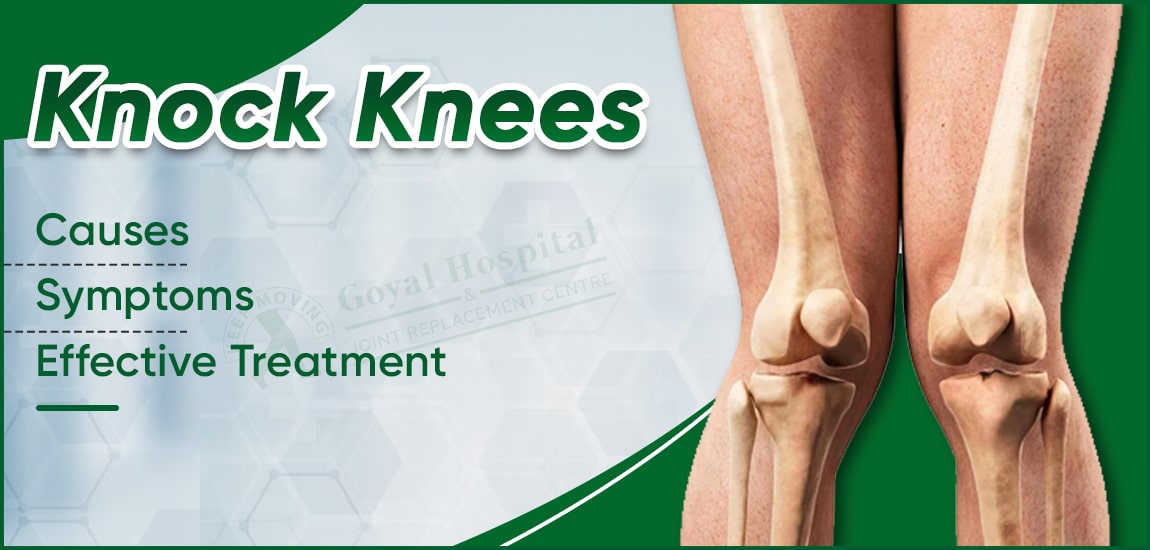Introduction
Knock knees, or genu valgum as it’s referred to in medical terms, is a scenario in which the knees of a person come together and touch each other at the straightened legs. It is usual in little kids, and most of the times, it goes away as they grow up, but if the same problem occurs in adults, it might be a sign of some health or structural issue.
If the condition is not treated, it might cause pain, bad posture and even joint problems. In the following paragraphs, we will have a closer look at the causes, the most common symptoms of knock knees, and the most helpful treatment options that are available to manage and correct the condition, thus enabling better mobility and joint health in general.
What Are Knock Knees?

Knock knees, also known as genu valgum in medical terms, refers to a leg deformity wherein the knees are obliquely positioned towards the mid-section of the body, thus creating a smaller distance between the ankles (intermalleolar distance) when the knees touch. This wrong positioning leads to the fact that while the ankles are apart, the knees are touching.
Knock knees may manifest as a normal physiological condition during childhood but usually disappear as the child grows. However, if it persists beyond the normal growth age or arises in adults, it is viewed as a deformity. The condition may be due to a variety of reasons, such as skeletal dysplasia, bone metabolic diseases, trauma, or neuromuscular disorders, and it is often necessary to carry out a medical assessment to discover the causes and to decide on suitable treatment.
You can Read Also:- Rheumatoid Arthritis: Symptoms, Diagnosis and Treatment
Symptoms of Knock Knees
Knock-knees symptoms should be understood as they are. They help to identify the severity of the condition and also decide if a medical evaluation or treatment is necessary. The most recognized signs associated with this condition are:
- Inward Knee Position: There is a distinct inward angling of the knees while one stands straight, thus making the knees touch each other even if the ankles are apart.
- Walking Abnormalities: Sometimes, it is hard to walk and when one walks, he or she walks in an altered manner which is often described as a “waddling” or “swinging” gait due to leg misalignment.
- Knee Discomfort: There might be discomfort or pain in the knees, which is mostly after long standing, walking, or doing any physical activity because of the unequal stress on the joints.
- Hip and Ankle Misalignment: There may be increased strain or pain in the hips, ankles, or lower back as a result of misalignment and altered weight distribution.
- Limited Motion: The knee joints are stiff or have limited movement thus making it hard to fully straighten or bend the legs.
- Knees or Feet Unevenly Worn: There is unequal pressure on the inner or outer side of the knees or soles of the feet which can cause early joint wear or flatfoot deformity.
- Poor Posture: One has difficulty keeping the correct posture or balance especially when walking or standing for a long time.
Causes of Knock Knees
Knock knees may result from a mix of various physiological, structural, or pathological factors. The understanding of all the factors involved helps in making the decision whether to consider the condition as temporary or requiring medical intervention. The primary causes are as follows:
- Physiological Development: Knock-knees in toddlers are typically indicative of normal bone maturation and alignment, which will eventually cease and disappear on their own around the age of 7 or 8.
- Genetic Factors: If the individual comes from a family where lower leg deformities are present, then he or she may have an increased likelihood of developing knock knees, which, in this case, would be suggesting a natural factor affecting the growth and alignment of the bones.
- Nutritional Deficiencies: Not having enough of vitamin D, calcium, or phosphorus can result in weak bones and rickets that cause bad knee alignment.
- Bone Diseases: Osteomalacia (softening of bones) and skeletal dysplasia are some of the conditions that can cause abnormal bone development resulting in knock knees.
- Trauma or Injury: Improperly healed fractures or injuries to the knee or growth plate can cause deformity either unilaterally or bilaterally, thus keeping up the condition of knock-knee.
- Bone Infections: Some bone infections in childhood could override the growing pattern of the involved bone thus creating angular deformities as in knock-knee.
- Obesity: Extra weight creates extra pressure on the knees which not only could lead to worse angulation but may also be a factor in the evolution of knock knees in children and adults.
- Arthritis or Degenerative Joint Conditions: In adults, long-term joint diseases like rheumatoid arthritis or osteoarthritis may erode the cartilage and eventually produce valgus deformity of the knees.
You can Read Also:- Leg Pain: Causes, Symptoms, And Treatment
Treatment Options for Knock Knees
Treatment for knock-knees depends on the cause and its relationship to the ages of the patient and the severity of the deformity. When detected early and treated appropriately, they help not only to avoid the complications associated with long-term deformity but also to improve the alignment and mobility of the limb. The following are the top knock knees management and treatment options:
- Observation and Monitoring: The knock-knees condition in children is mostly physiological and the cases of mild nature are often observed to get corrected with the child’s growth. To supervise children during pedomorphic development, a pediatric orthopedists is assigned to conduct regular monitoring.
- Orthotic Devices: The purpose of braces, shoe inserts, or customized orthotics is to help in attaining proper leg alignment and distributing knee weight evenly, mainly in growing children.
- Physiotherapy and Exercises: The fitness routines that are involved in the treatment of knees mainly consist of strengthening exercises done by the quadriceps, hamstrings, and hip abductors. Stretching can also increase flexibility which will, in turn, lead to better posture.
- Nutritional Support: In such cases where knock-knees is due to the lack of vitamin D or calcium, dietary changes accompanied by supplements are prescribed to restore the health of the bones and eliminate the chances of further deformity.
- Weight Management: Keeping a body weight that is healthy eliminates excess tension on the joints, which in turn stops the deformity of knock knees from getting worse and at the same time, reduces pain due to overworked joints.
- Medications: The use of medications may include recommending anti-inflammatory drugs or painkillers to control the discomfort and swelling in patients suffering from arthritis or joint pain.
- Surgical Correction: When the situation is very bad or continues, they do surgery to fix the problem by doing the guided growth surgery (hemiepiphysiodesis) for kids or osteotomy for adults, which will straighten and reshape the bones.
- Rehab after surgery: Physiotherapy is a critical component of regaining strength, restoring motion and ensuring the post-surgical healing of knee joint alignment post surgery even after a fully successful repair.
Conclusion
Knock knees is a treatable problem, and its effective treatment largely depends on timely diagnosis and proper care. Once the underlying causes of knock-knees are discovered, the most suitable treatment is decided, including physiotherapy and braces, as well as surgical correction in severe cases.
This condition is considered to be under Orthopaedics, and therefore, it needs professional care for the proper alignment and full range of movement. At Goyal Hospital, patients with knock-knees are treated by specialist orthopaedic doctors and provided with sophisticated treatment techniques that will lead to improvement in their posture, stability, and overall joint health in the long term.
FAQS
- What are knock knees?
Knock knees (genu valgum) are a condition of the lower legs, where the knees bend inward to the point that they touch, while the feet are still far apart. - How does knock-knees develop?
Knock knees may be due to normal childhood development, low vitamin levels, certain bone health conditions, injuries, or genetics, among other things. - Why treat knock knees?
There should be a main reason to treat knock knees: to help prevent joint pain, poor posture, and immobility, which can worsen over time. - What is the best knock-knee treatment?
The best knock-knees treatment for a person will depend on the cause of knock-knees and how significant it is (ranging from physiotherapy and braces to elective surgery). - Where can I get a knock-knee treatment?
You can come to the Orthopaedics Department at Goyal Hospital to receive a diagnosis and advanced knock-knee treatment.



